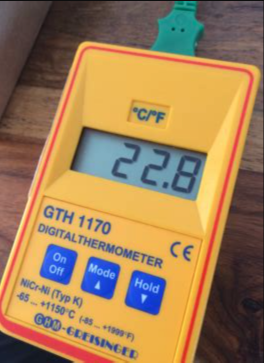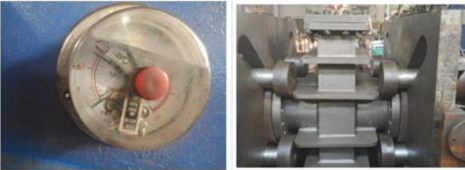-
Call Us
353 (0)21 7004001, 087 333 0547 - Unit B4, Link Road Business Park
Ballincollig, Co. Cork, P31 W950

08
Jul 22What Is An Air Tightness Test & Do I Need One?
- July 8, 2022
As a builder, if you are not aware of the importance of air stiffness testing, then you must be living under a rock.
Air Test is a crucial part of building regulation. This determines whether your building has an airtight seal, and it’s essential for energy effectiveness and safety.
It’s also a useful tool for identifying leaks that could be dangerous or expensive to repair. In some cases, cracks in the foundation or roof may go undetected without this kind of testing.
The best time to conduct it is when the structure is new and before any occupants have moved in. However, if you’re retrofitting an older building with new windows or doors, this can still be beneficial to test the air tautness after installation is complete.
What Does an Air Test Stands For?
Air permeability tests are a series of dimensions that are taken to determine how well your home is insulated. These tests are conducted in the winter and summer and will check for leaks around windows, doors, and vents. A Berl technician will be able to use a blower door test to determine how much air is being lost through cracks in your home’s walls, floors, and ceilings.
It can help you save money on heating and cooling bills by identifying where leaks occur so that they can be fixed. This also helps homeowners avoid health problems like mold growth from excess moisture buildup inside their homes due to poor ventilation.
Is It Necessary To Have An Air Test?
Previously, we have had a lot of people asking us whether they need an air tension test. The answer isn’t far from yes, but this depends on the type of house and its size, which will determine exactly how much testing you need.

If you live in an aged house, then there is a good chance that it doesn’t have an air stiffness test installed already. If this is the case, then we recommend getting one immediately before winter arrives because this prevents drafts from coming into your home through cracks around doors or windows during cold weather months.
If you live in a new house, it’s likely that your builder had already installed an air tightness test when they built your home. It means that there should be no reason to get another one unless something has happened to the original one or if you want to make sure it is still working properly after some time since its installation.
Type of Houses Require Air Test
It’s required for all commercial properties over 500m2, as well as for houses under 500m2 where there are any rooms that exceed 100m2.
The test is done for observation of the Building Regulation, which specifies how airtight a house should be and what level of leakage is acceptable. The test checks that the building’s insulation and gaps are up to standard.
If your property fails this test, it means you’ve got a problem with your home’s insulation or gaps. You’ll need to take steps to fix them before they become too serious and start costing you money. Other properties that need air test include:
• Houses with a basement
• Houses with an attic
• Single-family homes
• Apartment buildings
• Duplexes and townhomes
• Condominiums and co-ops
• Houses that have a crawl space, etc
How Air Testing Benefits You
It’s an important part of building performance. When a building has a high air permeability rating, it means that the air inside the building is maintained at an optimal level. There are many benefits of conducting this test on your building, such as:
Improves Enclosed Air Quality
Air permeability testing improves indoor quality. It helps control mold, mildew, and other allergens that can cause health problems in your home. It also helps prevent the spread of airborne contaminants from one room to another, which is a common problem in older homes with poor insulation or leaky ductwork.
Minimizes Your Monthly Bills
Minimizing bills by reducing energy loss is another benefit of testing. If you suspect your home has a significant volume of leakage, then you may be paying too much for your utility bills. It could be especially true if you have an older home with poor insulation or ductwork that needs to be replaced.
Helps in Enhancing Comfortability of the Occupants
It prevents asthma attacks and allergies by limiting the number of dust mites and other allergens that enter your home through cracks around doors and windows. It is especially important if anyone in your family suffers from these conditions.
Helps In Determining Fire Outbreak Possibilities
It is an important part of maintaining your home. It can reveal whether or not there are any gaps between pipes and wires that create a risk of fire, as well as confirm that your heating system is working properly.
It help our team to determine if there are any gases or vapors in your home that may be causing harm to those who live there. Not only does it help us identify potential hazards, but it also allows us to know what type of treatment is required for the problem. If we find a gas or vapor leak, then we will need to locate the source and seal it off before anyone gets hurt or sick from inhaling too much of it.
It Determines Your House’s Stability
It shows whether or not your windows are properly sealed and weather-tight. When you have an airtight seal around your windows, this means that no air can get in or out of the house through that window. It helps prevent moisture from entering the house when there’s rain or snow on the outside, and it keeps indoors warm during cold weather.
How to Perform an Air Test?
It is done by examining the pressure inside a house, then doing a comparison with the outdoor pressure. If there’s a difference between the two, it can indicate that there’s a leak somewhere in your building.
Air Test is usually done by taking measurements at multiple locations in your home or building. The most common way to do this is with a blower door test, which uses an external fan to pressurize or depressurize the house during testing.
A blower door can be installed in a number of different ways, but the most common method is to use the external door on your home as an intake and have it blow into the house through an internal door. This creates a negative pressure inside the house that pulls it out through any possible leaks or gaps in insulation.
The amount of time it takes for this pressure to equalize can be used as an indicator of how well your house is insulated and also gives you an idea of whether you may have any areas where there are gaps in insulation or other leaks that need fixing.

Can BERL Conducts Air-Tightness Tests
BERL does, in fact, carry out air tightness tests. Our talented team of professionals can help you determine the airtightness of your home or building to ensure it is properly sealed from the outside environment and maintain its thermal efficiency.
We work with a wide range of clients and projects, including residential homes and commercial buildings as well as those that have been built by other builders. Our air tightness testing involves different types, such as penetration and blower door tests, hence giving you the authority to select your favourite.
